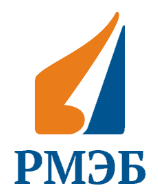RESISTANCE OF HEAT-RESISTANT YTTRIUM-CONTAINING SEALING COATINGS TO MECHANICAL FRACTURE WHEN FORMING CUTTING PATHS
DOI:
https://doi.org/10.31489/2024No3/81-92Keywords:
sealing coating, ion-plasma method, gas-flame method, mechanical fracture resistance, cutting tracks, high-temperature loading, yttrium, mechanical stability, gas turbine enginesAbstract
According to the results of tribotechnical tests of coatings made of KNA-82 alloy ligatures with the addition of yttrium of 0.1%, 0.3%, 0.5%, data were obtained that allowed us to establish the nature of changes in the dynamic coefficient of friction over the test period and numerous values of the energy intensity of material wear. The evaluation of coatings formed by the gas-flame and ion-plasma method was based on the following premise. The maximum resistance to mechanical fracture is determined by the manifestation of a constant minimum value of the dynamic coefficient of friction. This serves as an indicator of reduced friction force before reaching the fatigue limit. Another key factor is the number of separated particles produced per unit of integral work during the friction process. These evaluation parameters are lined up in a row by the number of points from 1 to 4. The maximum score corresponds to the maximum resistance, i.e., a lower value of the energy intensity of material wear and the minimum value of the stable friction coefficient. It has been determined that the same coincidence of these parameters according to the scores is almost at all stages of testing (I-III) was the coating formed by the gas-flame method with a yttrium concentration of 0.3%-0.5%. The exception was the coating formed by the ion-plasma method with a yttrium concentration of 0.1% at the fourth stage of testing.
References
Čížek M., Pátek Z. (2020) On CFD investigation of radial clearance of labyrinth seals of a turbine engine. Acta Polytechnica, 60(1), 38–48. DOI: 10.14311/ap.2020.60.0038.
Yu B., Ke H., Shen E., Zhang T. (2020) A review of blade tip clearance–measuring technologies for gas turbine engines. Measurement and Control, 53(3-4), 339–357. DOI: 10.1177/0020294019877514.
Zhang B., Li J., Li W., Ji H. (2021) Influence of Geometric Tooth Shape Parameters of Labyrinth Seals on the Flow Law and the Algorithm for Designing Straight Grate Teeth. Russian Physics Journal, 64(6), 1122–1129. DOI:10.1007/s11182-021-02432-0.
Enache M., Carlanescu R., Mangra A., Florean F., Kuncser R. (2021) Investigation of Flow through a Labyrinth Seal. Incas Bulletin, 13(2), 51–58. DOI: 10.13111/2066-8201.2021.13.2.6.
Dai X., Yan X., He K., Li J., Feng Z. (2020) Numerical Investigations of Leakage Performance Degradations in Labyrinth and Flexible Seals Due to Wear. Journal of Engineering for Gas Turbines and Power, 143 (5). DOI:10.1115/1.4049008.
Ullah A., Khan A., Bao Z.B., Yang, Y.F., Xu M.M., Zhu S.L., Wang F.H. (2021) Temperature Effect on Early Oxidation Behavior of NiCoCrAlY Coatings: Microstructure and Phase Transformation. Acta Metallurgica Sinica (English Letters), 35(6). DOI: 10.1007/s40195-021-01310-5.
Hao E., Zhao X., An Y., Deng W., Zhou H., Chen J. (2019) The effect of pre-oxidation on microstructure, mechanical properties and high-temperature tribological behaviors of HVOF-sprayed NiCoCrAlYTa coating. Applied Surface Science, 489, 187–197. DOI: 10.1016/j.apsusc.2019.05.334.
Jojith R., Sam M., Radhika N. (2021) Recent advances in tribological behavior of functionally graded composites: A review. Engineering Science and Technology, an International Journal, 25(5). DOI:10.1016/j.jestch.2021.05.003.
Szala M., Walczak M., Świetlicki A. (2021) Effect of Microstructure and Hardness on Cavitation Erosion and Dry Sliding Wear of HVOF Deposited CoNiCrAlY, NiCoCrAlY and NiCrMoNbTa Coatings. Materials, 15(1), 93. DOI: 10.3390/ma15010093.
Elsaß M., Kontermann C., Oechsner M. (2021) Temperature influence on the development of interdiffusion phenomena in MCrAlY‐coated nickel‐based superalloys. Materialwissenschaft und Werkstofftechnik, 52(2), 248–260. DOI: 10.1002/mawe.202000270.
Paul S. (2017) Stiffness of Plasma Sprayed Thermal Barrier Coatings. Coatings, 7(5), 68. DOI:10.3390/coatings7050068.
Wu Y., Li Y., Xu Y., Kang M., Wang J., Sun B. (2021) Unveiling the mechanism of yttrium-related microstructure inhibiting or promoting high-temperature oxidation based on Ni-Al-Y alloys. Acta Materialia, 211, 116879. DOI: 10.1016/j.actamat.2021.116879.
Wu Y., Li Y., Xu Y., Kang M., Wang J., Sun B. (2021b) Unveiling the precipitation-induced high-temperature oxidation behavior in a Ni-Al-Y alloy. Materials Letters, 297, 129977. DOI: 10.1016/j.matlet.2021.129977.
Boguslaiev V.O., Greshta V.L., Kubich V.I., Tkach D.V., Fasol Y.O., Lekhovitser V.O. (2020) Effect of alloying heat-resistant packing coatings on their tribotechnical, physical and mechanical properties. Naukovyi Visnyk Natsionalnoho Hirnychoho Universytetu, (6), 41–47. DOI: 10.33271/nvngu/2020-6/041.
Boguslaev V.O., Greshta V.L., Tkach D.V., Kubich V.I., Sotnikov E.G., Lekhovitser Z.V., Klymov O.V. (2019) Evaluation of the Tribotechnical Characteristics of Therma-Barrier Sealing Coatings under Critical Loads. Journal of Friction and Wear, 40(1), 80–87. DOI:10.3103/s1068366619010033.
Downloads
Received
Revised
Accepted
Published online
How to Cite
Issue
Section
License

This work is licensed under a Creative Commons Attribution-NonCommercial-NoDerivatives 4.0 International License.













